If you wish to use weights when baking and the creator of a recipe doesn’t offer you a weight for his or her flour, my testing reveals that it is best to use 128 grams for a cup of all-purpose flour. That’s the typical throughout 4 manufacturers of flour that I weighed utilizing strategies that I describe right here with a view to work out how a lot a cup of flour weighs in grams.
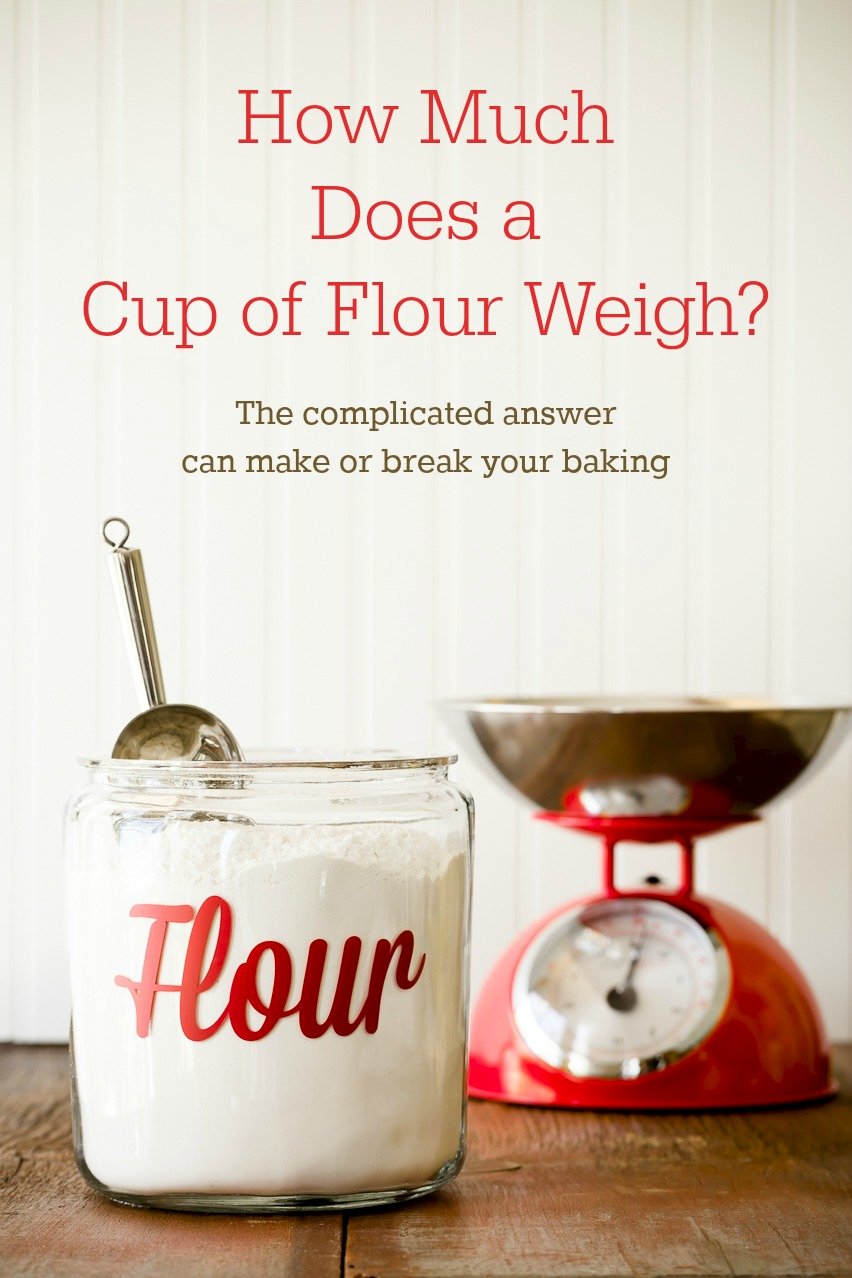
Why Use Weights for Measuring Flour
Working with weights is necessary if you need to have the ability to convert American recipes over to the metric system (changing flour from cups to grams). It’s additionally necessary if you wish to break down a recipe to see the ratios of various substances – it is best to all the time try this by weight. Lastly, utilizing weights allow you to scale recipes up or down extra simply and precisely.
Testing Methodology
When you do a Google search, you could end up on the Instructables web page that claims {that a} cup of all-purpose flour weighs 120 grams. Allrecipes says one cup of flour is 128 grams. Joy of Baking weighs in, calling one cup of flour 130 grams. Why is there a discrepancy, what quantity do you have to be utilizing, and does it matter in any respect? I weighed 192 cups of flour to determine how a lot a single cup of flour weighs!
I made a decision to take a look at three various factors that might trigger weight variation: the strategy of getting the flour into the measuring cup, the model of flour, and the kind of measuring cup.
This can be a lengthy publish, so seize a drink and prepare. First, I share my findings. Then, I deal with the necessary problem of whether or not the distinction in weight issues. On the finish, I summarize all of my conclusions (skip to that part in case you are brief on time).
The way to Fill a Measuring Cup
There are two important ways in which individuals fill their measuring cups.
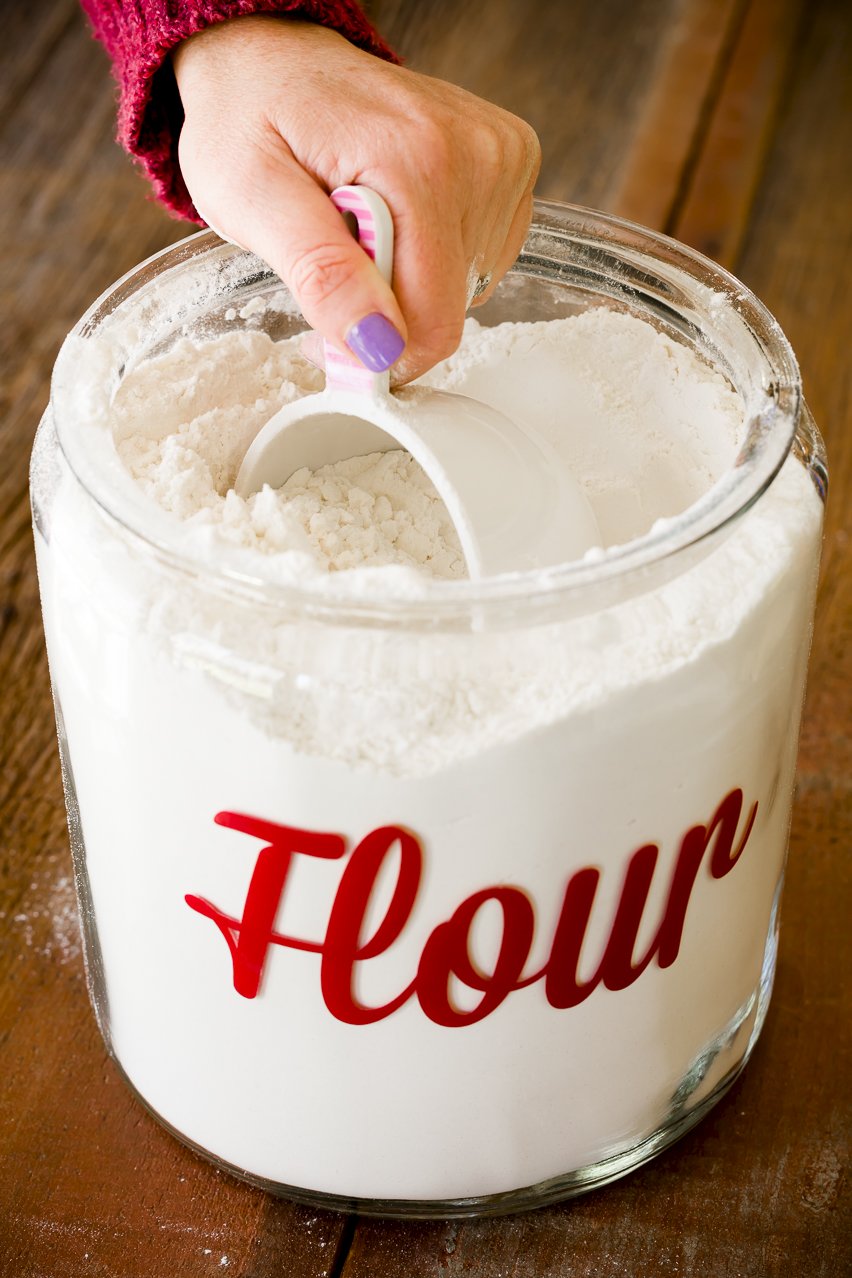
I’m calling the primary methodology “The Dip”. That is the place you dip your measuring cup proper into the bag or jar of flour.
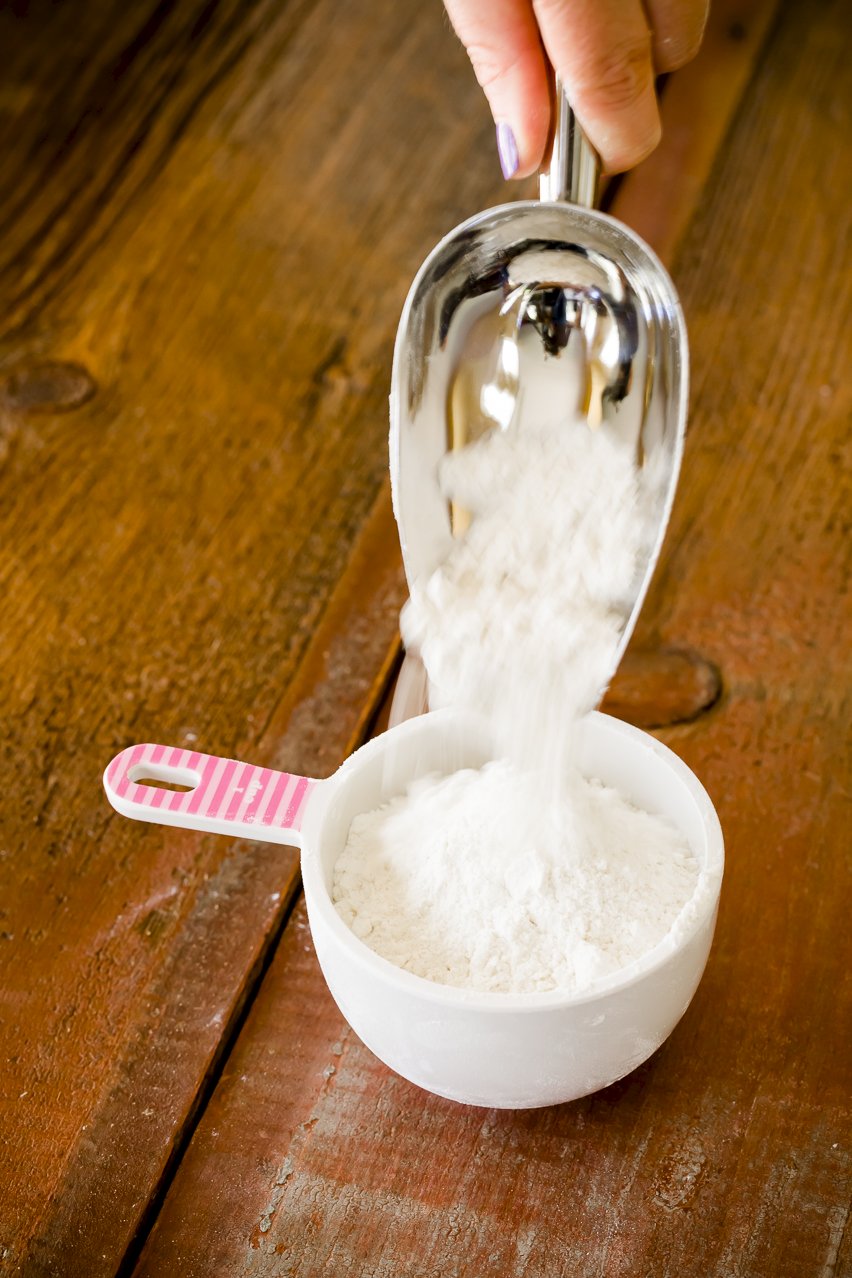
The second methodology is “The Scoop”. On this methodology, you employ a scoop to pour flour from the bag or jar into your measuring cup.

In each strategies, it’s necessary to degree off the highest of the measuring cup after it’s full.
I ran 72 checks on every methodology utilizing totally different manufacturers of flours and measuring cups. Listed below are the averaged outcomes:
| The Dip | 139 grams |
| The Scoop | 128 grams |
| Distinction | 11 grams (The Dip yields 8.5% greater than The Scoop) |
Maybe extra telling is the distinction in customary deviation between The Dip and The Scoop. As a fast math refresher, the usual deviation is a measure that’s used to quantify the quantity of variation in set of information values. A normal deviation of 0 would imply that I acquired the very same reply once I did issues the identical means. What I discovered was that the usual deviation for The Dip was 2.43 grams and the usual deviation for The Scoop was 1.93 grams. Utilizing The Scoop yields extra constant outcomes.
Variations in Flour Manufacturers
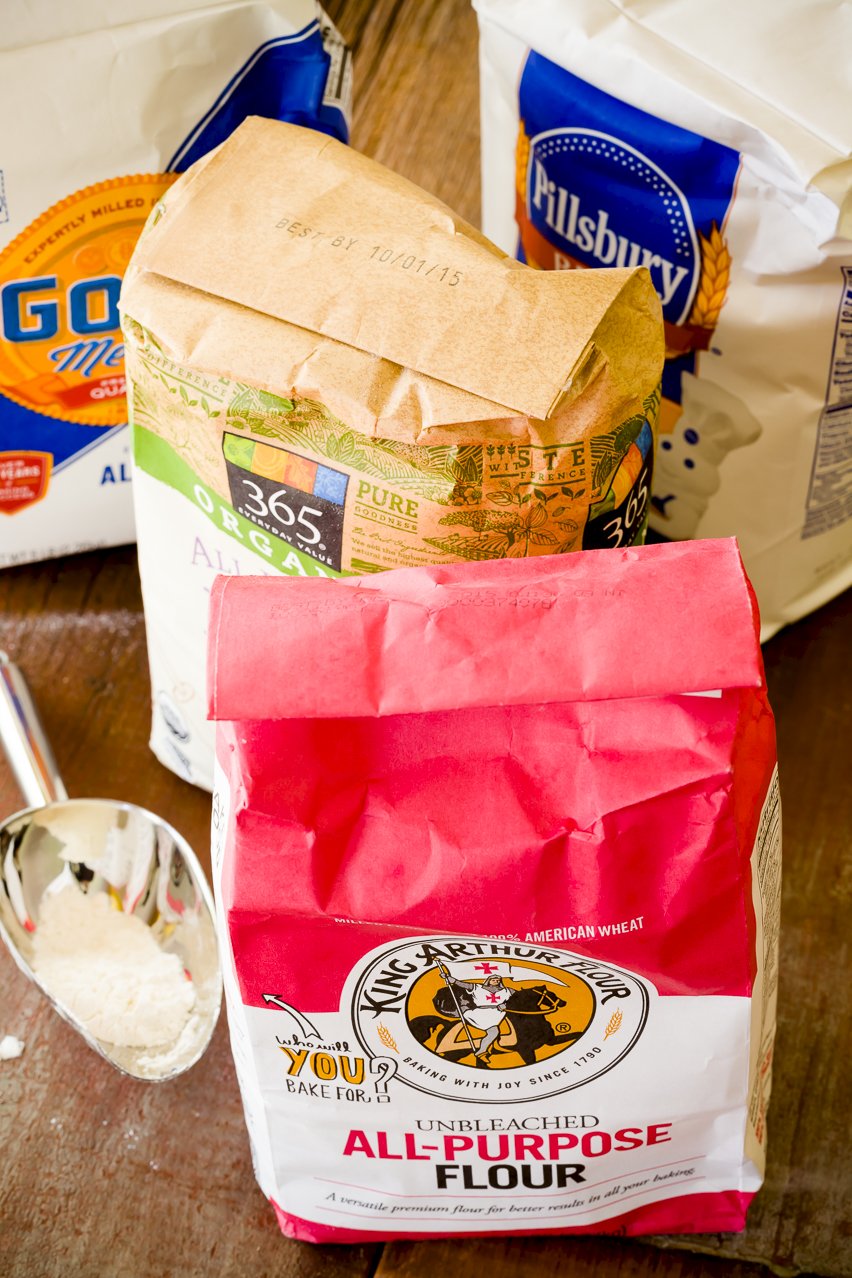
For this venture, I checked out 4 totally different manufacturers of flour: King Arthur Flour, 365 On a regular basis Worth Natural (Entire Meals’ home model), Gold Medal, and Pillsbury.
When calculating the model outcomes, I used a mean of measures taken utilizing The Dip and the Scoop Methodology with a wide range of measuring cups for every flour model. The outcomes are as follows:
| King Arthur Flour | 138 grams |
| 365 On a regular basis Worth | 136 grams |
| Gold Medal | 130 grams |
| Pillsbury | 129 grams |
That’s a 7.3% distinction between Pillsbury and King Arthur Flour!
Variations in Measuring Cups
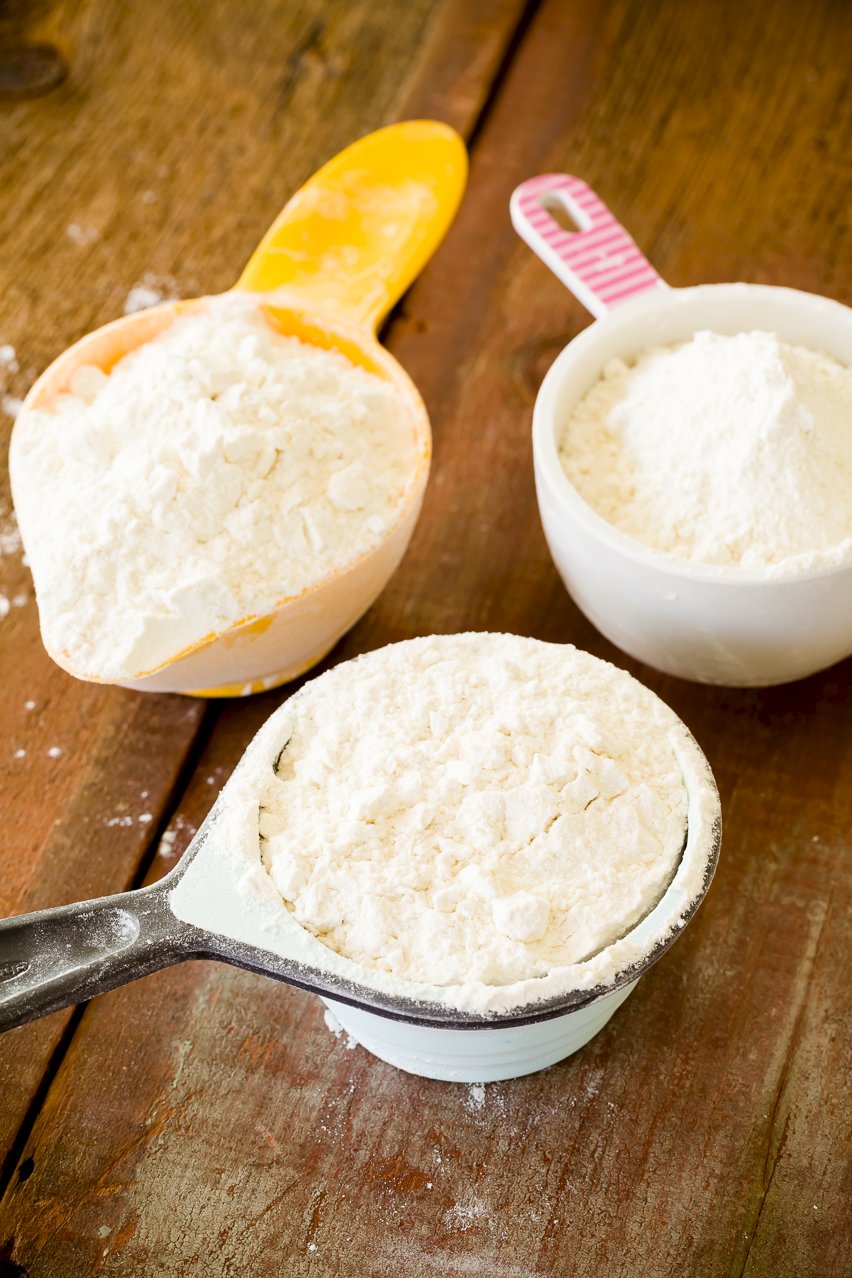
Will you get the identical outcome utilizing any measuring cup? It appears like the reply is “no”.
| Yellow Cup | 133 grams |
| Blue Cup | 132 grams |
| Pink Striped Cup | 135 grams |
The distinction in customary deviation can be putting right here. The yellow cup’s customary deviation was 2.80 grams, the blue cup’s was 2.05 grams, and the pink striped cup’s was 1.68 grams. I attribute this to the spherical form of the striped cup and the truth that it has much less of a rim. This makes it simpler to degree the cup.
Utilizing a Liquid Measuring Cup

I do know that a few of you employ a liquid measuring cup to measure dry substances. I attempted this and located the usual deviation was 8.76 grams! As a result of you possibly can’t degree a liquid measure, it’s almost unimaginable to get an correct outcome utilizing one. Don’t do it.
Warning:
By no means use a liquid measuring cup to measure dry substances!
Do Small Weight Variations Matter?
In brief, a distinction in weight can matter tremendously; it relies upon upon your recipe.
The very best weight that I measured for a cup of all-purpose flour was 144 grams (King Arthur Flour utilizing The Dip) and the bottom weight was 124 grams (Pillsbury flour utilizing The Scoop). That’s a 20 gram distinction. It appears like lots, however does it actually matter? I needed to know, so I baked two loaves of bread.
I used a scale to measure all the substances. I used 124 grams of flour in a single loaf and 144 grams within the different. I stored all the pieces else precisely the identical.
Because the loaves had been going by means of their second rise, I already had my reply.
The loaf on the left used the upper measurement and the loaf on the fitting used the decrease measurement. Every thing else was the identical. Wow!
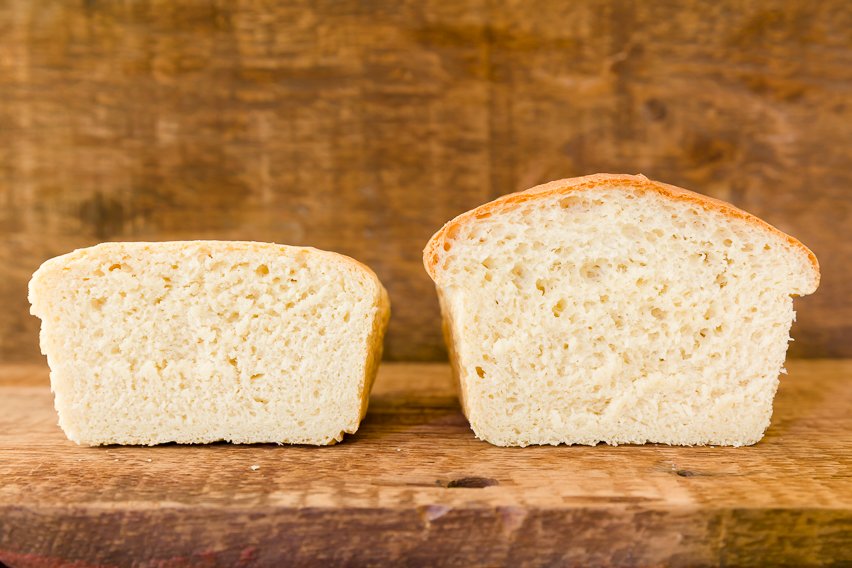
Right here’s how the 2 loaves sorted the bake. (For extra on this, King Arthur Flour has a wonderful publish about how small variations in substances can considerably have an effect on bread baking.)
In bread baking, flour is the primary ingredient and interacts with the yeast and the liquid. I puzzled if the distinction could be as outstanding in cupcakes the place flour is only one of many substances.
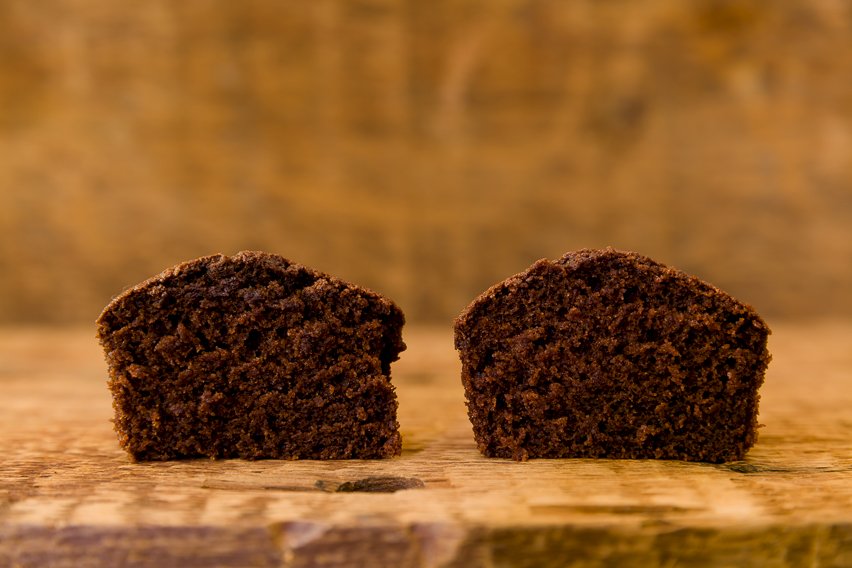
The chocolate cupcake on the left used the upper weight quantity and the one on the fitting used the decrease weight quantity. When you see a distinction, let me know. To me, they’re mainly equivalent and so they had been additionally equivalent in style.
Knowledgeable Ideas and FAQs
How a lot does a cup of flour weigh?
Primarily based on my in depth testing and averaging outcomes throughout flour manufacturers, a cup of all-purpose flour weighs 128 grams.
Ought to I exploit cups or grams when following a recipe?
If a recipe’s flour is measured in quantity (as are many dessert recipes), use cups. If a recipe is given in weight (breads, pastries, and macarons come to thoughts) or has a really particular rise, use grams.
Ought to I exploit a liquid measuring cup to measure flour?
As a result of you possibly can’t degree a liquid measuring cup, it’s almost unimaginable to get an correct measurement when utilizing one. Solely use a liquid measuring cup to measure liquids.
What kind of measuring cup ought to I exploit to measure flour?
Use a measuring cup that has a really clear, outlined high – ideally with no lip – as it’s simpler to degree and can yield extra constant outcomes.
How ought to I fill a measuring cup?
Use a scoop to pour flour from the bag or jar into your measuring cup. Then, degree off the cup utilizing a bench scraper or different flat edge. Following this methodology ensures that the flour isn’t too densely packed into your measuring cup.
I switched flour manufacturers and my good recipe utilizing cup measurements didn’t prove proper. What am I doing flawed?
When you efficiently make a recipe utilizing cups and wish to make it once more utilizing a special model of flour, you could want to regulate the recipe barely to take the totally different weights into consideration. Attempt measuring one cup of flour of every model a number of occasions and calculate the fitting weight measurement to compensate for the variations between manufacturers.
Keep Related!
